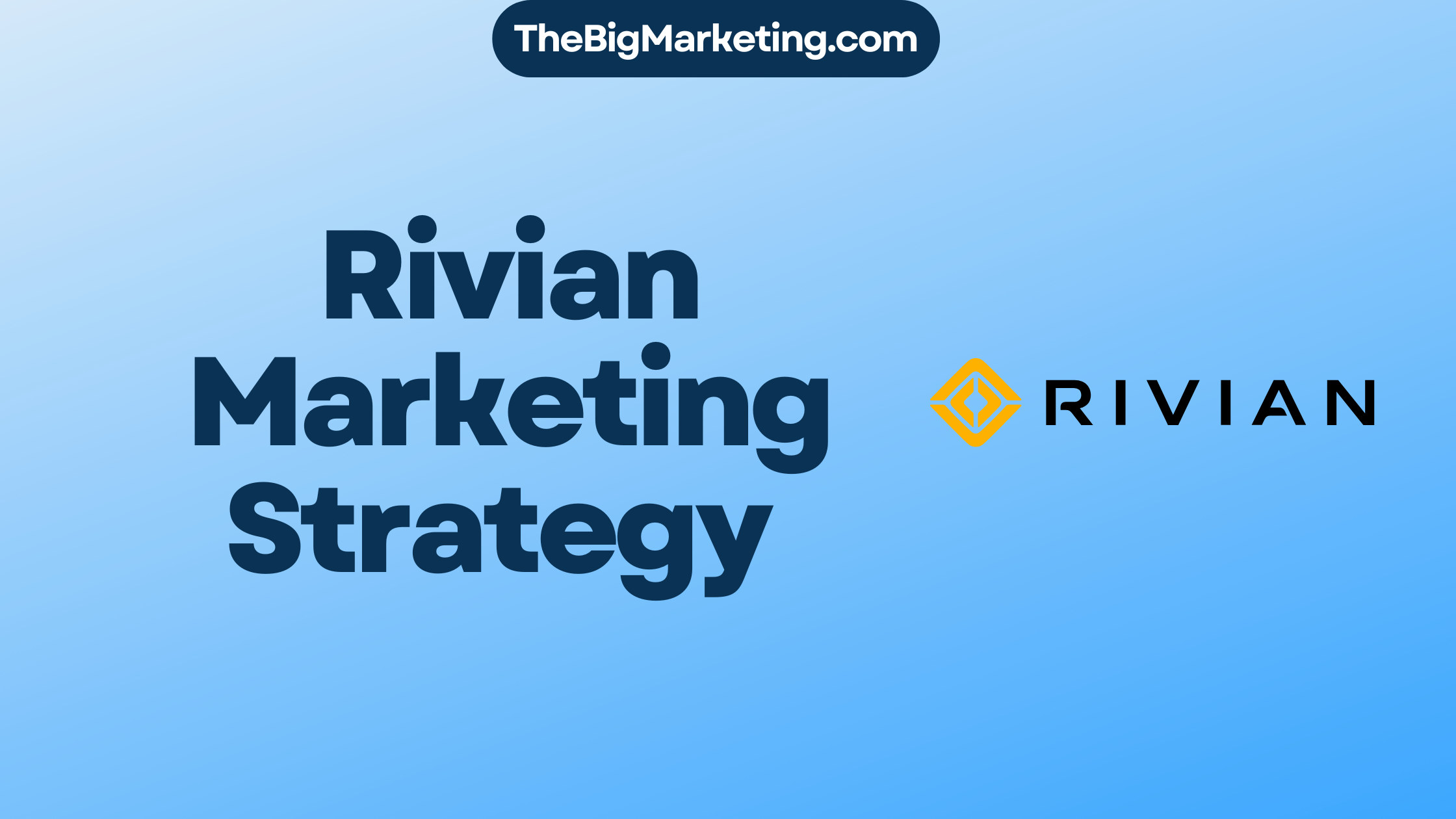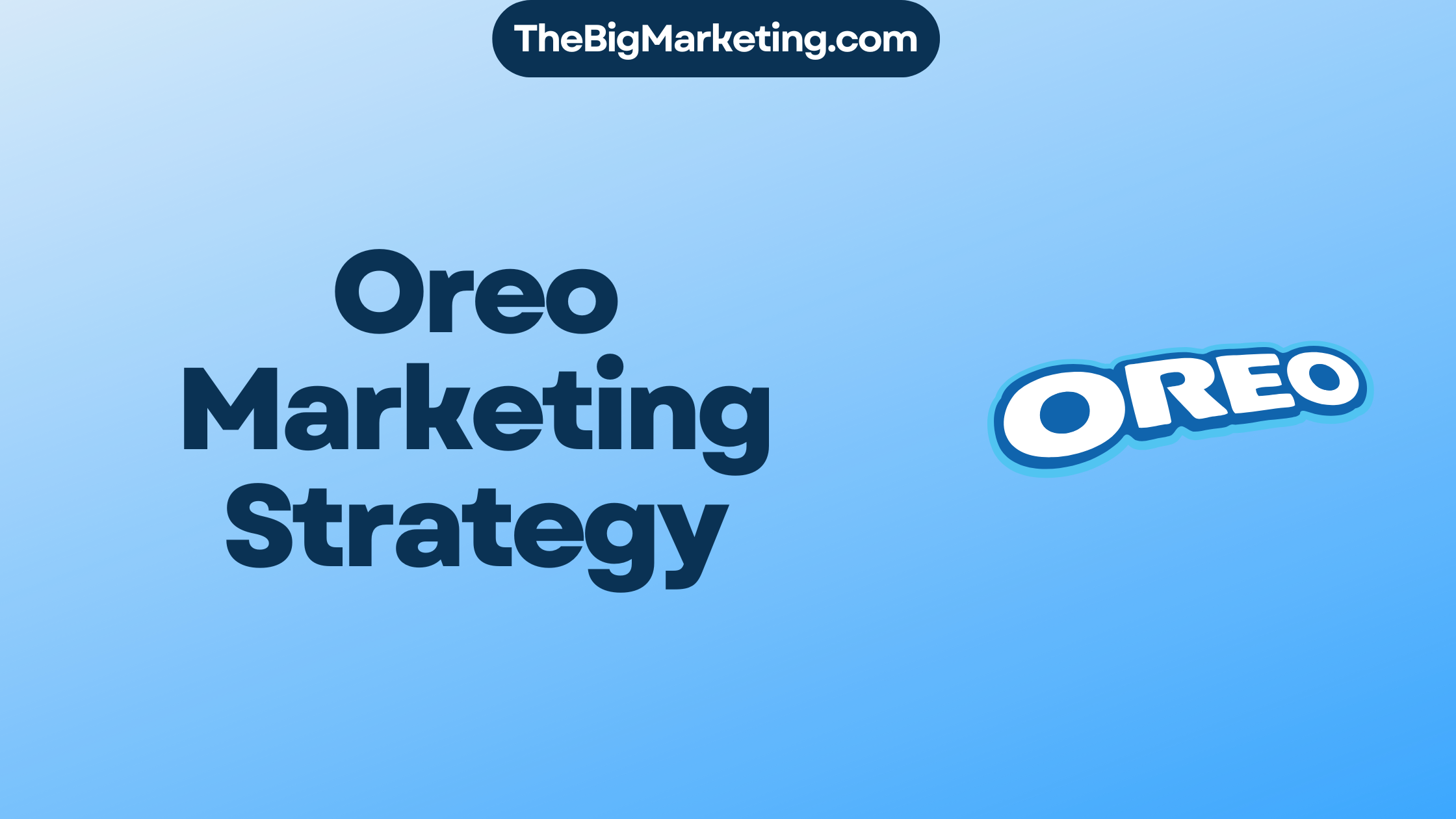Demand generation focuses on sparking interest in what a brand offers. It uses lead generation methods and marketing strategies to reach more people. Through this, businesses can better attract and get customers. This piece breaks down demand generation and shares examples of its impact.
Key Takeaways:
- Demand generation involves creating interest and demand for a brand’s offerings.
- Lead generation techniques and inbound marketing strategies are used to optimize the marketing funnel and engage the target audience.
- Conversion rate optimization and marketing funnel optimization play crucial roles in demand generation.
- Targeted audience engagement is essential for nurturing leads and acquiring customers.
- Measuring marketing ROI is vital to assess the success of demand generation efforts.
What is Demand Generation?
Demand generation is all about getting people to notice a brand’s products or services. It uses different strategies to make a brand stand out and connect with potential customers. The goal is to build a strong image and create lasting relationships.
Understanding what potential customers think of a brand is key. It’s about showing how the brand can solve their problems. By doing this, a business builds trust and becomes a go-to choice, increasing demand for its services or products.
In the business world, specifically between businesses (B2B), demand generation is very important. It helps businesses attract others by showing how they can solve problems. Strategies like social media, sharing expert insights, and finding leads are used to get noticed.
An effective demand generation strategy boosts a business’s visibility, attracts more customers, and grows its income. It is central to marketing. It helps a business reach more people and achieve its goals.
| Key Elements of Demand Generation | Common Tactics |
|---|---|
| Brand Awareness | Social media campaigns |
| Lead Generation | Thought leadership content |
| Nurturing Customer Relationships | Lead generation efforts |
By using these tactics wisely and always looking to improve, businesses can stand out. They can bring in more high-quality leads. And they can build strong, long-lasting relationships with their customers.
Demand Generation vs. Lead Generation
Demand generation and lead generation are key in marketing and sales. They often seem the same, but have different goals.
Demand Generation
Demand generation is about building a brand and creating interest. Its aim is to educate and engage people for a strong customer base. This involves things like content marketing, social media, webinars, and leadership activities.
Lead Generation
Lead generation is a tactic under demand generation. It focuses on getting potential customers’ contact info. The main goal here is to turn interest into leads for the sales team.
While demand generation leads to lead generation, they’re not the same. They each have their strategies. Demand generation makes people aware and interested. Lead generation then turns that interest into leads for the sales team.
Demand Generation Strategies
Effective strategies are key for drawing attention from the people you want to reach. Many methods exist to raise demand and lead to your brand’s growth.
Blogging
Blogging helps attract leads by offering informative articles. By posting quality content regularly, your brand becomes a leader in its field. Blogging not only boosts your visibility online but also improves your search engine ranking.
Blogs allow you to display your knowledge, tackle common issues, and address your audience’s needs. Through your blog, you engage potential customers and guide them on their purchase path.
Social Media
Social media is perfect for generating interest. Using Facebook, Twitter, LinkedIn, and Instagram, you can spark conversations and promote your brand. It’s a way to share your blog posts and updates, connecting with people directly.
Targeted ads and collaborating with influencers on social media can boost your brand’s visibility. A strong social media presence builds a community that is likely to interact with your content and consider your products.
Thought Leadership
Being seen as a thought leader can greatly help with demand generation. Hosting webinars, giving interviews, and writing white papers display your expertise. This earns trust, which can convince people to pick your brand when they need solutions.
Case Studies and Testimonials
Case studies and testimonials offer proof of your product’s success. They show how others have benefited, reinforcing your brand’s reliability. Testimonials provide real endorsements, adding credibility to your brand.
Using case studies and testimonials proves the value and satisfaction your customers experience. It builds confidence in potential buyers, easing their concerns.
Mixing various strategies such as blogging, social media, thought leadership, case studies, and testimonials can significantly raise demand. This combination attracts, engages, and converts your audience, fostering business growth.
The Role of Inbound Marketing in Demand Generation
Inbound marketing is key to successful demand generation campaigns. It focuses on creating engaging content to attract potential buyers. It helps guide them through their buying journey, working for demand capturing and creation.
Demand Capturing
For demand capturing, content targets existing demand by giving valuable insights. It provides solutions and information to the audience. High-quality content that solves their problems attracts potential buyers. This is possible through channels like:
- Content marketing with informative blog posts, whitepapers, and ebooks
- Search engine optimization (SEO) to boost search result visibility
- Pay-per-click (PPC) advertising for targeted traffic to landing pages
- Social media marketing for engaging and promoting content to the audience
Demand Creation
Demand creation focuses on educating and generating new demand. It creates content that meets the audience’s needs and interests. This attracts buyers unaware of the solution. Effective demand creation strategies include:
- Thought leadership content to position the brand as an industry leader
- Case studies and successes that show the solution’s value
- Webinars and events for in-depth knowledge and insights
- Interactive content like quizzes to educate and engage the audience
Inbound marketing uses many channels and tactics to engage the audience. By offering valuable content, businesses build trust and credibility. This drives demand and conversions effectively.
| Channel | Description |
|---|---|
| Content Marketing | Creating valuable blog posts, ebooks, and other informative content |
| Social Media | Engaging with the target audience and promoting relevant content |
| SEO | Optimizing website content to improve organic search visibility |
| PPC Advertising | Driving targeted traffic through paid search and display ads |
The Role of Sales in Demand Generation
Sales teams are key to creating demand, particularly in strategies like account-based marketing (ABM). They help not just with marketing but also in connecting sales and marketing efforts. Together, they work to reach high-quality leads and accounts through all stages of the sales process. The shift from traditional marketing to a more inclusive strategy has happened. Now, inbound, outbound, and lifecycle marketing blend together to boost demand and income.
In outbound demand generation, sales teams are proactive. They work with marketing to pick out and chase potential customers. Using ABM, sales and marketing craft customized plans to draw in these key accounts. This method leads to better connections, more leads, and higher sales success.
The marketing funnel is turned upside down in this strategy. It’s not about getting as many leads as possible anymore. Instead, the focus is on choosing specific accounts likely to make a purchase. Sales teams can then concentrate their efforts where they count the most. This results in more leads and a better return on investment.
Full-funnel marketing is vital in this process. It mixes inbound and outbound tactics at every step of the buyer’s journey. Sales teams can connect with potential buyers at all times, from first interest to the final sale. This thorough approach makes sure no chance is missed and increases success chances.
Inbound marketing is still important for sparking interest and building brand awareness. But, the real drive behind a successful demand generation campaign is the teamwork between sales and marketing. By working closely, they can generate demand, nurture leads, and drive up sales.
Adopting a lifecycle marketing method is key to syncing sales and marketing. This strategy focuses on connecting with customers at every journey stage. By knowing what customers want and need at each phase, sales can offer the right support. This leads to happier customers and more loyalty.
Inbound vs. Outbound Marketing
| Inbound Marketing | Outbound Marketing |
|---|---|
| Attracts leads through content marketing and SEO | Targets specific accounts through personalized outreach |
| Focuses on creating brand awareness and educating prospects | Focuses on direct engagement and lead generation |
| Leads are generated through organic interest and inbound inquiries | Leads are actively pursued through outbound tactics |
| Emphasizes long-term relationship building and nurturing | Emphasizes immediate lead generation and conversion |
Metrics and KPIs for Measuring Success in Demand Generation
It’s key to measure how well a demand generation campaign works. This lets you make smart decisions for future plans. By keeping an eye on the right metrics and KPIs, companies get important info. This info helps understand how well their effort in generating demand is going.
Lead Quality: The North Star Metric
Lead quality is a top metric for demand generation. It shows how successful the efforts are. High-quality leads are more likely to become customers. This helps the company grow and make more money. Watching lead quality helps companies see if their strategies are working. Then, they can change their plans to draw in better leads.
Performance of Marketing Channels
Good demand generation campaigns use many ways to reach their audience. It’s important to see which ways work best. By looking at data like website visits, new leads, and customer conversions for each way, companies can fine-tune their efforts. They’ll know where to spend their resources for the best results. This smart approach helps get a better return on investment and smarter budget use.
Conversion Rates and Customer Lifetime Value
Conversion rates and the lifetime value of a customer are key to seeing if a campaign is working well and if it’s profitable. Conversion rates show how many leads turn into customers. Keeping an eye on this helps companies know where they can do better. Customer lifetime value shows how much a customer will spend over time. By tracking this, companies can focus on attracting customers who will spend more in the long run.
Percentage of Opportunities Converted
The rate at which opportunities turn into customers is another important measure. It tells how well lead nurturing and sales strategies are working. Watching this helps companies spot and fix problems in their sales process. Improving this rate means more sales and better campaign results overall.
Measuring Demand Generation Success: A Comprehensive Approach
Measuring a demand generation campaign’s success needs a broad view. It’s not just about individual numbers but how they work together. Looking at all these metrics together gives a full picture of how things are going. This lets companies make smart choices to improve their future efforts.
To see how these metrics are connected, check out this table:
| Metric | Definition | Importance |
|---|---|---|
| Lead Quality | The quality of leads generated through demand generation efforts. | Indicates the effectiveness of demand generation strategies in attracting qualified leads. |
| Performance of Marketing Channels | The effectiveness of different marketing channels in driving results. | Guides resource allocation and optimization of marketing efforts. |
| Conversion Rates | The percentage of leads or prospects that convert into paying customers. | Reflects the efficiency of the sales process and the effectiveness of lead nurturing strategies. |
| Customer Lifetime Value | The total revenue generated by a customer over their lifetime. | Measures the long-term value of acquiring new customers and informs demand generation strategies. |
| Percentage of Opportunities Converted | The percentage of opportunities that convert into paying customers. | Shows the effectiveness of sales tactics and identifies areas for optimization in the sales funnel. |
By analyzing these metrics often, companies get a clear picture of their campaigns’ success. These insights help with making informed decisions. This leads to better demand generation plans and higher marketing ROI.
Leading Indicators and Lagging Indicators in Demand Generation
In demand generation, it’s crucial to look at different types of indicators. Leading indicators show the immediate effects of marketing efforts, like increasing interest. Lagging indicators, on the other hand, focus on actual results like sales and profits. Let’s dive into what these indicators mean for evaluating demand generation.
Leading Indicators
Leading indicators tell us early on if our marketing is working. Here are a few key ones to watch:
- Brand Search Volume: This counts how many times people search for your brand. It’s a good measure of brand awareness.
- Organic Traffic: Visits from search engines show how well your SEO and content are performing.
- Website Entrances and Engagement: This looks at how many visitors come to your site and what they do there. It shows if people are interested and staying engaged.
- Referral Traffic: Traffic from other sites can indicate strong partnerships or successful content sharing.
Lagging Indicators
Lagging indicators help us see the real effects of our marketing on business goals. They connect directly to conversions, sales, and gaining new customers. Here are some critical lagging indicators:
- Conversion Rates: This measures how often website visitors do what you want, like buying something. It shows if your campaigns are working.
- Cost per Acquisition: This tells you how much you spend to get a new customer. It’s vital for budgeting and improving your campaigns.
- Customer Lifetime Value: Knowing how much value a customer brings over time can guide your long-term strategies and customer care.
Measuring and Optimizing Success
Keeping an eye on both leading and lagging indicators gives a full view of a campaign’s success. Leading indicators spot early trends in brand visibility and audience interest. Lagging indicators show us clear results in revenue and conversions.
To improve demand generation, align your strategies with insights from these indicators. By understanding your marketing’s impact, you can make better decisions. This means higher conversion rates, smarter targeting, and smarter spending.
Gated Content in Demand Generation
Gated content is a top tool for generating leads in demand generation campaigns. It asks users for their contact info to access valuable content like ebooks or exclusive reports. This way, businesses gather leads and build an audience ready for more engagement.
Though gated content may lessen page views and put off some users, it’s highly effective when used well. By offering content that meets the audience’s interests, businesses draw in quality leads interested in their offerings.
The Benefits of Gated Content
Gated content has many benefits in generating demand:
- Lead Generation: It’s a key tool for collecting contact details from interested prospects.
- Targeted Audience: Gated content filters leads, ensuring they’re genuinely interested in what a business offers.
- Value Exchange: Users feel they’re getting value in return for their contact info.
- Lead Nurturing: With the contact details, businesses can send tailored emails, guiding leads closer to a purchase.
For better gated content results, marketing automation software is key. It handles tasks like automating emails and tracking user actions. This personalizes and improves the lead nurturing process.
| Gated Content Strategy | Benefits |
|---|---|
| 1. Create an informative ebook on a relevant topic. | – Establishes authority in the industry – Provides valuable insights to the audience – Addresses pain points and challenges |
| 2. Design a landing page with a clear call-to-action. | – Encourages users to give contact info for the ebook – Shows the content’s value and benefits |
| 3. Utilize marketing automation software to handle leads. | – Automates follow-up emails – Tracks user interests |
| 4. Analyze and improve the campaign. | – Checks how well the gated content works – Makes changes based on user data |
With good strategy and tools, gated content significantly boosts demand generation. Using marketing automation software and refining strategies makes gated content a powerful asset. It helps businesses attract and nurture engaged leads.
Demand Capture and Demand Creation Channels in Demand Generation
Demand generation strategies can be executed through various channels. They aim to capture existing demand and create new demand. Using intent channels, education channels, and targeted marketing tactics, businesses can engage their target audience effectively. This engagement drives demand for their products or services. Let’s look at some key channels for demand capture and demand creation:
1. PPC Advertising
Pay-Per-Click (PPC) advertising is a method to capture existing demand. It allows businesses to display ads to potential customers searching for relevant products or services. By bidding on keywords, businesses can appear on search engine results and attract visitors. PPC campaigns are great for capturing demand and getting qualified leads.
2. Conversion Rate Optimization (CRO)
Conversion Rate Optimization (CRO) focuses on optimizing landing pages to increase lead generation. It involves analyzing user behavior, A/B testing, and making data-driven changes. These efforts boost the chances of turning visitors into leads or customers. CRO is essential for capturing demand by improving the user experience.
3. Review Websites
Review websites let customers share experiences and opinions about products or services. Using these sites helps businesses capture demand by highlighting positive reviews. By managing their presence and engaging with customers on these sites, businesses can build trust. This trust attracts new customers.
4. Social Media Platforms
Social media is great for both capturing and creating demand. Through content, interactions, and targeted ads, businesses can attract and engage potential customers. Social media offers a way to connect through images, videos, and interactive posts. It’s perfect for reaching a wide audience.
5. Influencer Marketing
Influencer marketing uses the power of industry leaders to promote products or services. Partnering with influencers helps businesses reach a targeted audience. This approach builds trust through endorsements from trusted figures. It’s effective for capturing and creating new demand.
6. Email Marketing
Email marketing is an effective way to engage and create demand. By sending targeted content to a built email list, businesses can nurture relationships. This approach drives conversions. Email campaigns can be customized for different audience segments, ensuring the right message reaches the right people.
7. Events
Events, whether online or in-person, are opportunities for direct engagement. They allow businesses to showcase their expertise and educate potential customers. Events like webinars and trade shows generate interest in products or services. They provide a platform for networking and immersive experiences, impacting demand generation significantly.
These examples highlight channels businesses can use for demand capture and creation. By choosing the right channels based on their audience and goals, businesses can effectively drive demand. This strategy leads to revenue growth and business development.
The Stages of a Demand Generation Campaign
A demand generation campaign has several key stages. These are vital for making revenue goals, knowing your audience, making targeted content, getting leads, and measuring success for improvements.
Stage 1: Setting Revenue Goals
First, we set clear revenue goals. This means deciding what success looks like. Setting specific targets helps focus efforts on driving revenue.
Stage 2: Defining Buyer Personas
Understanding your audience is crucial. This step involves researching to create detailed buyer personas. Knowing your ideal customers’ needs and preferences helps make content that meets their needs.
Stage 3: Creating Targeted Content
After defining buyer personas, it’s time to create content for them. This could be blogs, whitepapers, videos, or infographics. The right content addresses their problems and offers solutions, attracting and engaging your audience.
Stage 4: Lead Generation and Nurturing
Now, the focus is on getting and nurturing leads. Strategies like content marketing and email campaigns help attract potential customers. These leads are then nurtured to move them closer to buying.
Stage 5: Implementing Demand Generation Metrics
To track a campaign’s success, you must measure it correctly. Metrics to watch include lead quality, conversion rates, and ROI. Analyzing these helps improve strategies and campaign performance.
By following these steps, companies can launch successful demand generation campaigns. Planning, understanding your audience, creating the right content, and measuring success are key. These steps can help businesses grow in the digital world.
Conclusion
Demand generation is key for any marketing plan to succeed. It helps businesses attract people, get their interest, and keep leads warm to boost sales. This involves using smart online marketing, getting leads, and knowing your audience well.
To see if a demand generation campaign is working, tracking the right numbers is essential. Look at lead generation, how many people are buying, and the value customers bring over time. Adjusting the campaign with this data helps businesses meet their sales targets and get the most from their marketing spend.
Keeping up with demand generation means always improving and changing. By keeping up with new trends and knowing the best ways to connect with people, companies can be ahead of others. This helps make strong bonds with their audience.







